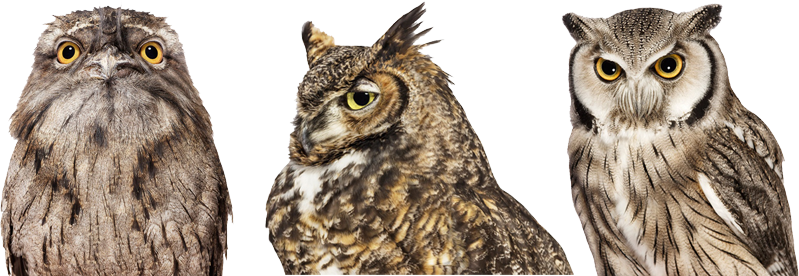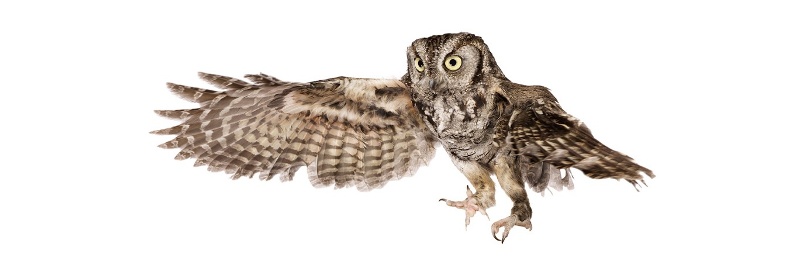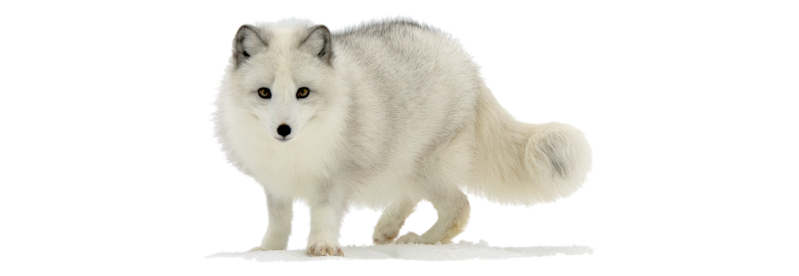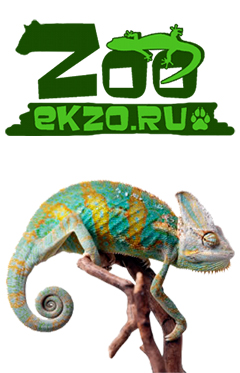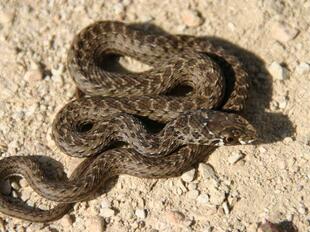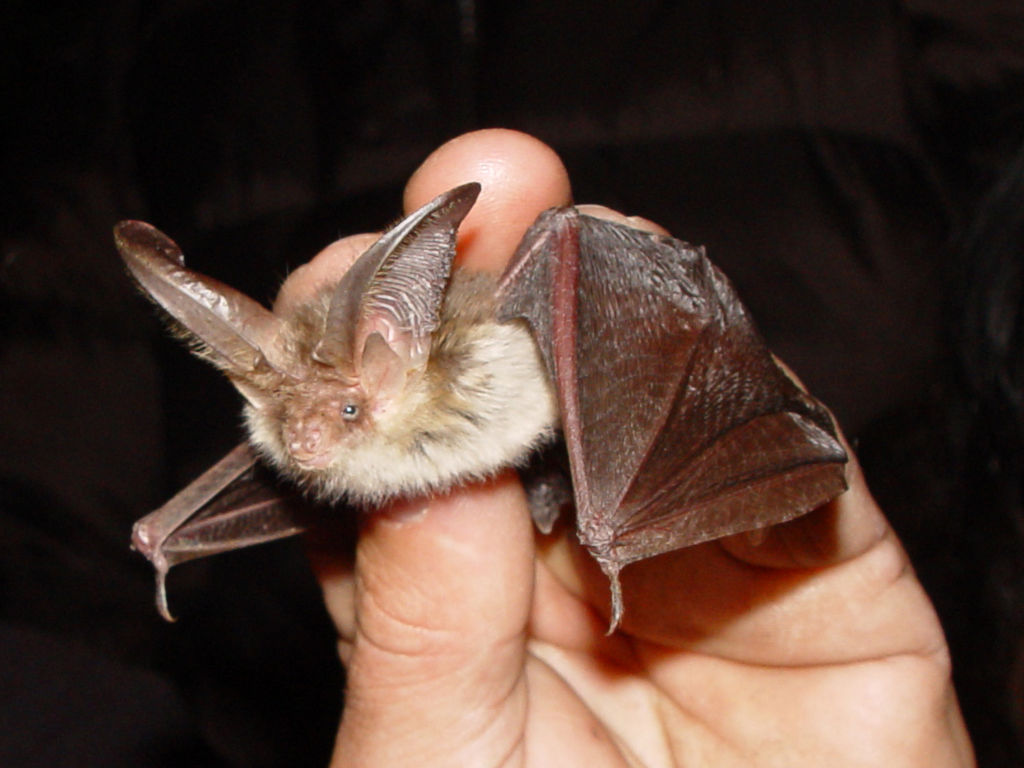
Brown long-eared bat, or Common long-eared bat(Plecotus auritus)
Phylum —chordata
Class — mammalia
Order — chiroptera
Family — vespertilionidae
Genus – plecotus
Appearance
An adult Brown long-eared bat has a body length of 4.5-4.8 cm, a tail of 4.1-4.6 cm, and a forearm length of 4-4.2 cm. The ears are 3.3-3.9 cm in length, and readily distinguish the long-eared bats from most other bat species.
Habitat
It is found throughout Europe, with the exception of Greece, southern Italy and southern Spain. It is found to the east up to the Urals and Caucasus.
Behavior
Plecotus auritus group together in relatively small groups (no more than 80 individuals). The only social relationship that has been identified is the mother/offspring relationship. Females remain in natal roosts their entire lives and males are likely to depart to another roost.
Brown long-eared bats emerge from roost after sunset and do not return again until shortly before sunrise. They hover in the confined roost briefly before emerging, displaying their ability to remain stationary in the air without any forward motion. There is no convincing evidence of migration of Plecotus auritus, but they do hibernate from autumn to March.
Diet
Brown long-eared bats are insectivorous, feeding mainly on Lepidoptera (moths). They are opportunistic foragers, feeding on the most available insects, including beetles, flies, earwigs, and spiders. Bats forage in a variety of ways, such as catching insects in free flight, landing on the ground to capture prey, or hovering in mid-air to listen for movements of insects to pick them off the foliage. They forage at night, usually relatively close to their roost.
Reproduction
These bats mate in autumn. Females only bear one offspring per breeding season (every year); twins are very rare.The gestation period of Brown long-eared bats is relatively long, but the specifics are unknown. The young are altricial at birth, born pink and hairless with disproportionately large feet, used to grasp their mothers' fur once they are born. They feed on their mothers' milk until they are three weeks old, and then are left in the roost while the mother leaves to forage for food. At six weeks old they are weaned and able to forage for themselves. Females are often ready to breed at one-year-old and males are sexually mature at fifteen months.
Although records show that Plecotus auritus are able to live up to thirty years, the average lifespan is seven years for males, sixteen years for females, and fifteen years for the sexes combined.
In captivity
Bats are very "difficult" animals to keep. The difficulties of caring for them, feeding, and other concerns about these peculiar animals are not compensated by friendly contacts with them. The nocturnal lifestyle also makes it difficult to work with bats. Naturally, these animals cannotbe attributed to the number of favourable pets.
There are two main rues that keepers should follow:
- provide home for winter (a place where you can control a relatively constant temperature of 3-9 оС);
- feed insects.
One of the main difficulties in keeping bats in captivity is creating the necessary microclimate in their premises. The body temperature of these animals varies depending on the surrounding temperature, and is different in the state of sleep, wakefulness, and in flight. These amazing creatures can increase their temperature due to muscle activity, which is expressed in the form of a kind of"shiver" when awakening from sleep. To rest, the animals need a moderate coolness, but the same temperature can kill a densely fed bat, which must digest what it has eaten in the heat before going to bed.
In their natural shelters, the animals themselves provide optimal conditions for a particular period, choosing the warmest or, conversely, the coolest corner of the cave, placing themselves singly or in clusters.
So we have to arrange compartments in rooms for bats, in which different temperatures and humidity are maintained, so that the animals themselves choose the most suitable conditions for themselves. To ensure the necessary temperatures in the cell, its ceiling is divided by partitions into a number of compartments 10-20 cm deep, in one of which a heater is used to maintain the temperature plus 30-35° C, while in a remote cold compartment, the room temperature is maintained. As heaters, electric lamps are used, tightly covered with a light-tight casing. The wooden walls of the cages, the ceiling and the slats that form the compartments are covered with a fine stainless mesh, which allows the animals to move freely, clinging to it with their claws. The edges of the mesh should be sealed very carefully to avoid injuries to animals and staff sticking out the ends of the wire.
The necessary humidity conditions are created by placing jars of water in different places of the cage, which also serve as drinkers. Animals that prefer high humidity usually settle above the water. Drinkers are placed at the walls and corners of cages, so that animals can quench their thirst by going down to the water along the walls.
A necessary condition for the well-being of bats in captivity is to regularly warm them up in flight. Animals that live in small cages should be allowed to run and move for at least 10-20 minutes before each feeding.
Feeding bats is quite difficult and troublesome.The basis of their food in captivity are mealworms, pupae.To make this food more complete, the worms are placed in small flat banks for two to four days before feeding for enhanced nutrition with protein and vitamin feeds - fresh cabbage and carrots, raw and cooked meat, white bread, moistened with milk. Before feeding, worms are carefully separated from the remains of feed, sifting through a colander and discarding large remnants with tweezers.
In addition to insects, animals are periodically given milk mixtures from a pipette, which include milk (about a glass), egg yolk, purified beer yeast or wheat bran (a teaspoon), granulated glycerophosphate or calcium glycerophosphate (5 grams), honey or rosehip syrup (one teaspoon), vitamin E (two drops). Periodically, two or three crushed multivitamins are added to the mixture. Insect feeding is done five times a week; milk mixtures are given periodically for a week in a row before feeding insects, after which you should take a break of one or two weeks.
Fed animals can digest food only in heat, when certain areas of the cells are heated to plus 30-35° C, otherwise, instead of digestive processes, putrid ones occur, which leads to the death of bats.
 Russian
Russian
 English
English








